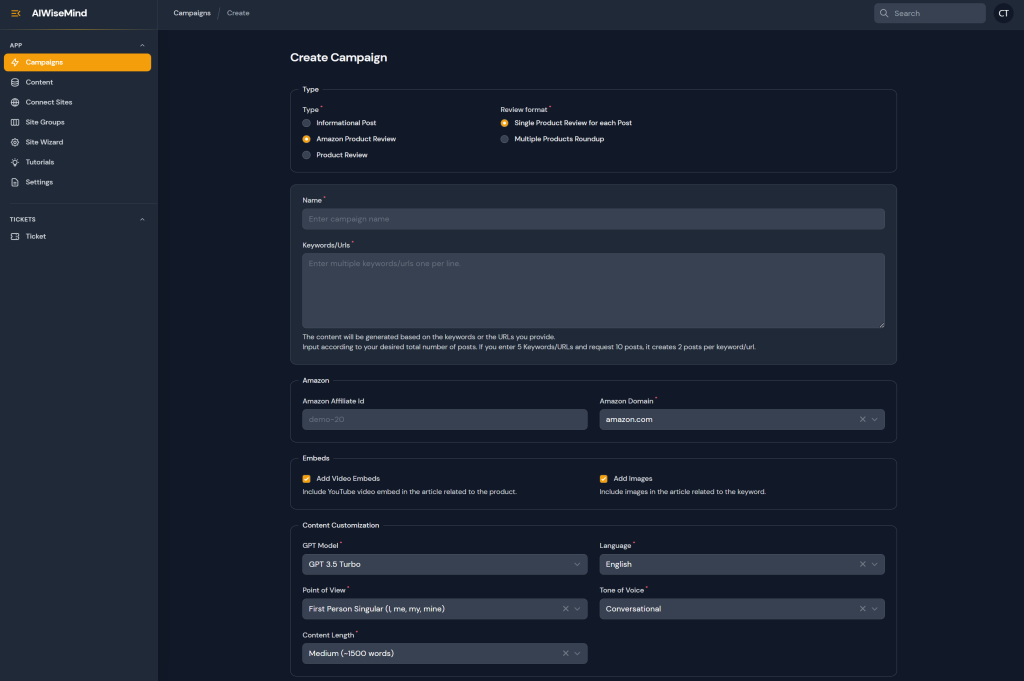Hi, I’m wpaiplugin! If you’ve ever stared at a glowing monitor at 2 AM with coffee breath, chasing inspiration like a squirrel after an acorn, you know the vibe. You’re not following a Spec Doc, not reading the API docs… you’re just vibe coding. And hey, sometimes that’s where the magic (and, let’s be honest, a bit of chaos) happens.
Let’s dig deep into the world of Vibe Coding—what it is, where it comes from, why modern developers are obsessed with it, and how you can vibe safely without waking up to a codebase that haunts your dreams. 😅

The Story: Midnight Inspiration or “What Does This Button Do?”
Picture this: It’s a late Thursday night. Your team’s app demo is tomorrow, and that little nugget of an idea won’t let you sleep. You toss “best coding practices” out the window—and start hammering away. Features appear out of nowhere. You’re in the flow state programming zone! Typos? Maybe. Unit tests? Uh, later. You’re not coding; you’re summoning code from the depths of the Developer Mindset.
The next morning, bleary-eyed, you open your repo and think, “Did I really write all that? It works… but why?”
If that sounds familiar, welcome! You’re a member of the Vibe Coding Society. No encore needed.
What is “Vibe Coding”?
Let’s break it down. Vibe coding is when you toss careful planning aside and code by instinct. No rigid structure. Just your coding intuition, good tunes, and a dash of “let’s see what happens!”
- Not TDD.
- Not Waterfall.
- Not Scrum.
- Just pure, unfiltered creative coding.
Where Does the Term “Vibe Coding” Come From?
The phrase has roots in internet culture—think Twitter memes and Reddit threads where devs poke fun at “just vibing with the code.” It’s the software sibling of painting abstract art with your keyboard. It’s the official programming mode of 2 AM “I bet I can refactor this in one sitting.”
It resonates because it’s real: sometimes our best ideas happen when we stop overthinking and just swim with the current. Or, as Reddit user @CodeBro420 (probably) said: “Planning is just future-vibing, I’m living in the NOW.”
Why “Vibe Coding” Resonates with Developers Today
In a world obsessed with agile sprints, code reviews, and JIRA boards that spawn issues like rabbits, “vibe coding” is a rebellion. It’s the punk rock of programming—raw, creative, and sometimes a little messy.
Modern developers crave moments when they can:
- Slip into a flow state programming trance.
- Create prototypes in record time.
- Wield their coding intuition for maximum impact.
- Hack together solutions just for the thrill of it.
Whether you’re building in public or slinging spaghetti code in private, the urge to just vibe with your editor is universal.

The Upside: Flow, Fun, and Fast Prototyping
1. The Flow State Zone
You know the feeling—you’re coding, time bends, and suddenly it’s sunrise. That’s the flow state programming sweet spot, where vibe coding shines. You’re not fighting the code, you are the code. As Twitter legend @devhumor quips: “When you’re in the flow zone, code writes itself and you just hope deploy works.”
2. Creativity Gets Unleashed
No blockers, no meetings, just you and your editor. This is pure creative coding. It’s where hackathons are won, and where that odd side project you ship to Product Hunt comes from. Sometimes the best features start as a “What if…?” moment. Ever seen a meme generator that doubles as a weather app? That’s vibe coding.
3. Rapid Prototyping Magic
You’re down to try new libraries, weird design patterns, and questionable variable names—because speed trumps perfection. Need a proof of concept by tomorrow? Time to vibe.
- Move fast, break things (and, uh, maybe fix them before code review).
- Get ideas out of your head and into code fast.
- Collect instant feedback from users or teammates.
4. Builds Developer Confidence
Sometimes you need to remind yourself that you can still ship (even if it’s slightly wobbly). Getting your hands dirty and seeing something work in minutes? Instant ego boost.
The Downside: Technical Debt, Spaghetti Code & “What Did I Do Last Night?”
Alright, let’s get real. Vibe coding comes at a cost. It’s kind of like eating cake for breakfast—fun now, regret soon. Here’s what vibe coding can leave you with:
1. Hello, Technical Debt
What’s the most common outcome of unchecked vibe coding? Piles of technical debt. That helpful function you wrote? Reused everywhere, and now impossible to refactor.
- Twitter @RealCodeDad: “If you vibe coded it, you debug it.”
- Your future self will thank (or curse) you.
2. Lack of Structure
Tests? Documentation? Modular design? Who needs those when you’re on a vibe? Spoiler: Eventually, you will.
- Code reviews get brutal (“What were you thinking?”).
- Onboarding a new dev is a horror story.
- Unpredictable bugs lurk where the vibes stopped.
3. Maintainability Headaches
That clever hack at 2 AM may not look so genius at 9 AM. The line between creative coding and chaos is thinner than you think. Your codebase starts to resemble the famous spider-web meme from Reddit.
4. Regret—and Meme History
- “I don’t know what this function does. I just remember feeling something when I wrote it.” —@StackOverflowMemes
- Technical debt memes aren’t just for laughs—they’re warnings from the future.
Real-Life Examples: From Meme Generators to Actual Products
Twitter Thread Gone Wild
Remember when someone shipped a “Lunch Roulette” Slackbot over a weekend? That was pure vibe coding—a random idea, a lot of Red Bull, and an MVP that took off at the company. Several startups have traced their beginnings to these code sprints where intuition trumps planning.
Reddit’s Love Letter to “Spaghetti Love”
Check out r/ProgrammerHumor and you’ll find gems like: “I don’t remember writing this, but the git log says I did.” Relatable? In 2023, one user shared their one-night-to-launch habit tracker that went viral—before they remembered they’d never set up auth. Oops.
Open-Source “Vibe” Projects
- Open source is sprinkled with libraries that started as “I wonder if I can hack this together” and went on to get thousands of stars—before PRs for bug fixes and docs rolled in.
- Not all genius is planned; some of it is just letting the vibes flow into GitHub.
How to Balance Vibe Coding with Maintainability
Here’s the million-dollar question: Can you have the energy and passion of vibe coding while keeping your repo healthy? Absolutely! You just need a bit of discipline (gasp) and some clever tactics.
Tips for Keeping the Vibes Without the Mess
- 1. Use Feature Branches: Let yourself vibe on a branch. Merge only what survives the morning-after test and review.
- 2. Leave (Useful) Comments: Your future self is a stranger—explain what that “tempFixForNow” does. Even a meme comment helps break the confusion!
- 3. Refactor Ruthlessly (Later): Vibe coding is for sprinting—you can always restructure after the burst. Schedule a “sober second look.”
- 4. Write Just-Enough Tests: You don’t need 100% coverage in the heat of the moment, but at least protect the essentials.
- 5. Use Pair Programming for Reality Checks: Let a teammate glance over your magical method names. If they laugh, you might need to come down off the vibe cloud.
- 6. Build-in Breaks: Take a breath and review before deploying. The best ideas survive the test of “Wait, what was I thinking?”
- 7. Embrace Tools for Structure: Use linters, formatters, and CI/CD pipelines as bumpers on your bowling lane—they keep you (mostly) honest.
Example Table: Vibe Coding vs Disciplined Coding
| Aspect | Vibe Coding | Disciplined Coding |
|---|---|---|
| Planning | “Let’s just see what happens” | Scope, roadmap, tickets |
| Speed | Maximum warp 🚀 | Steady and safe |
| Creativity | High, anything goes | Channeled into safe solutions |
| Maintainability | Dubious (future you is sweating) | Easy for new devs to onboard |
| Technical Debt | Mountains? | Managed, tracked |
| Fun Factor | 11/10 | 7/10 (unless you love paperwork) |
Meme Break! Because, Developer Culture
- “When you vibe code and it compiles first try: I am unstoppable.”
- “When you vibe code and it breaks prod: I am in danger.”
- “‘It worked on my machine’ is the battle cry of the vibe coder.”
- “Trying to fix last night’s code: ‘Dear diary, today I met a stranger…’”
How to Cultivate Healthy Vibe Coding Habits
It’s not about suppressing your creative coding urges, but about channeling them.
Five Strategies to Vibe Responsibly
- 1. Capture the Magic, Document the Rest: After any major coding spree, jot down a README section or even a voice memo. “What was I thinking?” Explain your approach—future team members (and you) will be grateful.
- 2. Always PR and Peer Review: Let the team in on your vibes. If they have questions, maybe your branch needs a refactor before it lands in main.
- 3. Celebrate Experiments (in Dev Environments): Spin up a playground repo or feature branch explicitly for vibing. Merge only the best parts into production.
- 4. Use Automated Tests as Safeguards: Even a few key tests are better than nothing. Let bots protect you when you’re coding on vibes alone.
- 5. Debrief on What Worked: After a hacky night, review what felt good and what needs rework. Iterate on your workflow to keep the fun and lose the pain.
Boosting the Developer Mindset—Why Trusting Your Gut Matters
Sometimes, the developer mindset gets bogged down in frameworks and process. But the truth is: innovation, intuition, and chaos fuel progress.
- Intuition lets you shortcut your own brain’s decision tree.
- Creative coding often means skipping “how it’s always done.”
- Products live or die by prototypes and out-there experiments.
But…
Trust your gut, but not your memory. Leave breadcrumbs for Future You!
Building Trust via Stories, Not Just Code
Want to humanize your team’s approach? Show your work, your wild ideas, and your journey. Share those late-night “it worked!” moments in sprint retros, internal chats, or even as blog posts.
No one relates to perfect code—but everyone relates to debugging until breakfast.
Use user-generated content, testimonials, or “war stories” to build community and trust around your playful approach. It reminds everyone that great products come from both carefully planned roadmaps and pure coding chaos.
Embrace the Vibes—Responsibly!
So, is vibe coding a superpower or a supervillain? It’s both, honestly.
- Use it to prototype, invent, and keep programming fun.
- Balance it with enough structure to not doom your codebase.
- Document the chaos so your teammates don’t slay you in code review.
- Most of all: Remember, the world’s most loved features often start as wild ideas at midnight.
Ready to Vibe and Thrive?
Ever wondered if you could build something amazing just by following your coding intuition? Try it—safely! Use feature branches, document your journey, and refactor after the fun. Coding can be both joyous and responsible—if you let your vibes guide you, but not drive you off a cliff.
Let’s keep the best parts of vibe coding—the energy, creativity, and wild ideas—while making our work sustainable (so future-you doesn’t have a meltdown).
Ready to ship something awesome? Turn on your playlist, crack open your editor, and let the vibes flow. Just leave a comment for yourself, will ya? 😉
Got a wild “vibe coding” story? Drop a comment or share your memes. Let’s build a developer culture where both structure and serendipity co-exist. Happy coding, and may your next session be both inspired and maintainable!


